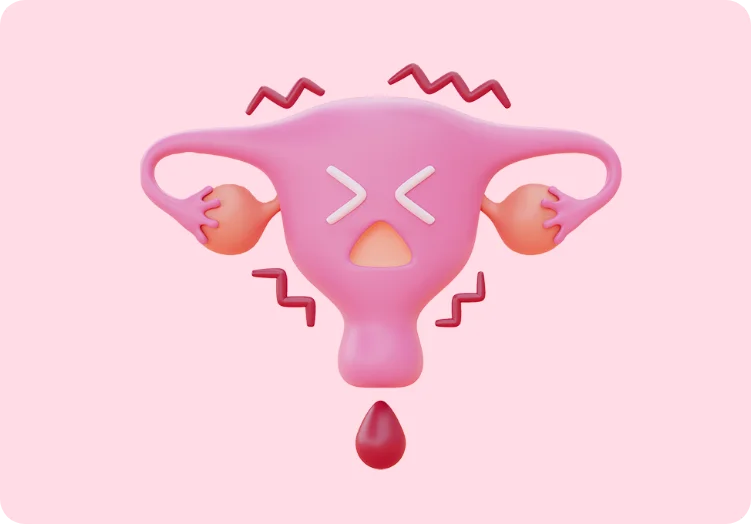Postmenopausal Bleeding
Bleeding after menopause shouldn’t be ignored.
Postmenopausal bleeding is a condition where a woman experiences vaginal bleeding after entering menopause. While it is not uncommon, it should never be ignored, as it can sometimes signal underlying health issues.
Dr Ljiljana is dedicated to helping women navigate postmenopausal health with compassion and expertise. She is equipped to address both the physical and emotional aspects of postmenopausal bleeding, ensuring patients feel supported in their healthcare journey.


What is Postmenopausal Bleeding?
Postmenopausal bleeding is defined as any vaginal bleeding that occurs more than 12 months after your last menstrual period. For many women, the transition into menopause signals the end of regular bleeding. Therefore, any new bleeding should be evaluated by a healthcare professional to rule out potential causes.
Postmenopausal Bleeding Causes
Several conditions can lead to postmenopausal bleeding, ranging for benign to more serious causes.
Thinning of the uterine lining, which can become fragile and prone to bleeding.
Dryness and thinning of vaginal tissues due to reduced oestrogen levels.
Noncancerous growths on the cervix or uterine lining.
Thickening of the uterine lining, sometimes caused by hormone imbalances.
Although rare, postmenopausal bleeding can be a sign of endometrial or uterine cancer.

Post Menopause with Dr Ljiljana
Postmenopausal bleeding can be daunting at first, but Dr Ljiljana is available to offer expert support and treatment. Whether you’re experiencing postmenopausal bleeding or have any concerns about your transition into post menopause, contact Dr Ljiljana for guidance on this next phase of your life.
Treating Postmenopausal Bleeding
Dr Ljiljana offers a range of treatment options for women experiencing postmenopausal bleeding, but each treatment depends on the underlying cause of the bleeding:
- Endometrial atrophy—oestrogen therapy or lubricants can alleviate symptoms
- Polyps—removal of polyps through a simple procedure called a polypectomy
- Endometrial hyperplasia—hormonal treatments, or in some cases, minor surgical intervention
- Cancer—if diagnosed, treatment may include surgery, radiation, chemotherapy, or a combination of these

Emotional Impacts of Postmenopausal Bleeding
Experiencing postmenopausal bleeding can be distressing for many women, often leading to feelings of anxiety, fear, or confusion. The unexpected nature of the condition may trigger concerns about serious underlying health problems, such as cancer. Additionally, some women may feel embarrassed discussing the issue, which can delay seeking medical advice.
Dr Ljiljana recognises the emotional challenges associated with postmenopausal bleeding and strives to create a safe, nonjudgmental space where patients can openly share their concerns. She takes the time to provide reassurance, explain potential causes, and offer compassionate guidance through the diagnostic and treatment process. With Dr Ljiljana, your emotional wellbeing is as important as your physical health, and every effort is made to ensure you feel heard, understood, and cared for.
When to See a Doctor for Postmenopausal Bleeding
Postmenopausal bleeding should never be dismissed as normal. If you’re experiencing bleeding or spotting after menopause, pain or discomfort associated with bleeding, changes in vaginal discharge, or additional symptoms such as pelvic pain or bloating, schedule an appointment with Dr Ljiljana Miljkovic-Petkovic.
Dr Ljiljana Difference
Dr Ljiljana knows that women tend to prioritise the needs of everyone else before their own, which means their health concerns are often overlooked. This is why Dr Ljiljana takes her time listening to you and understanding how you wish to be treated. She then applies her skills and expertise to provide the best possible care with positive outcomes.
